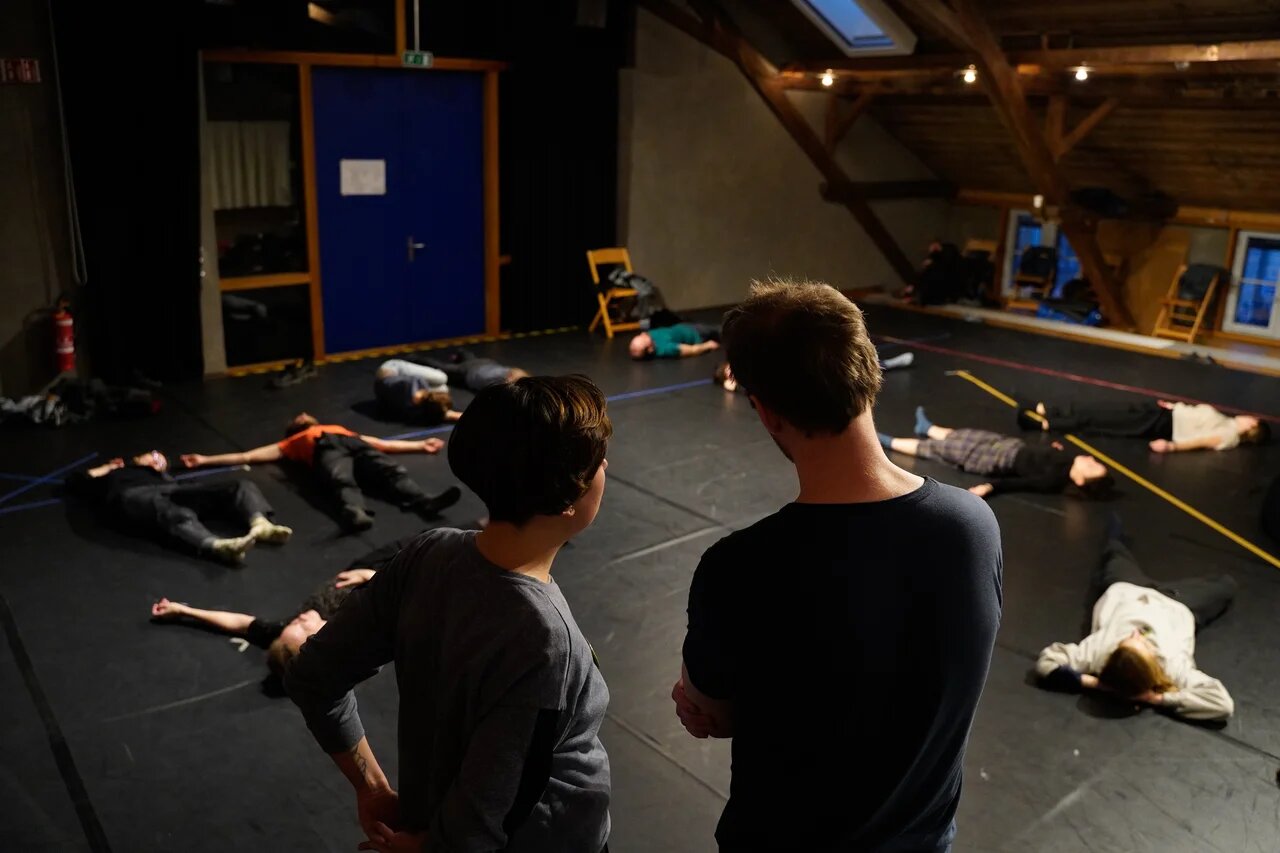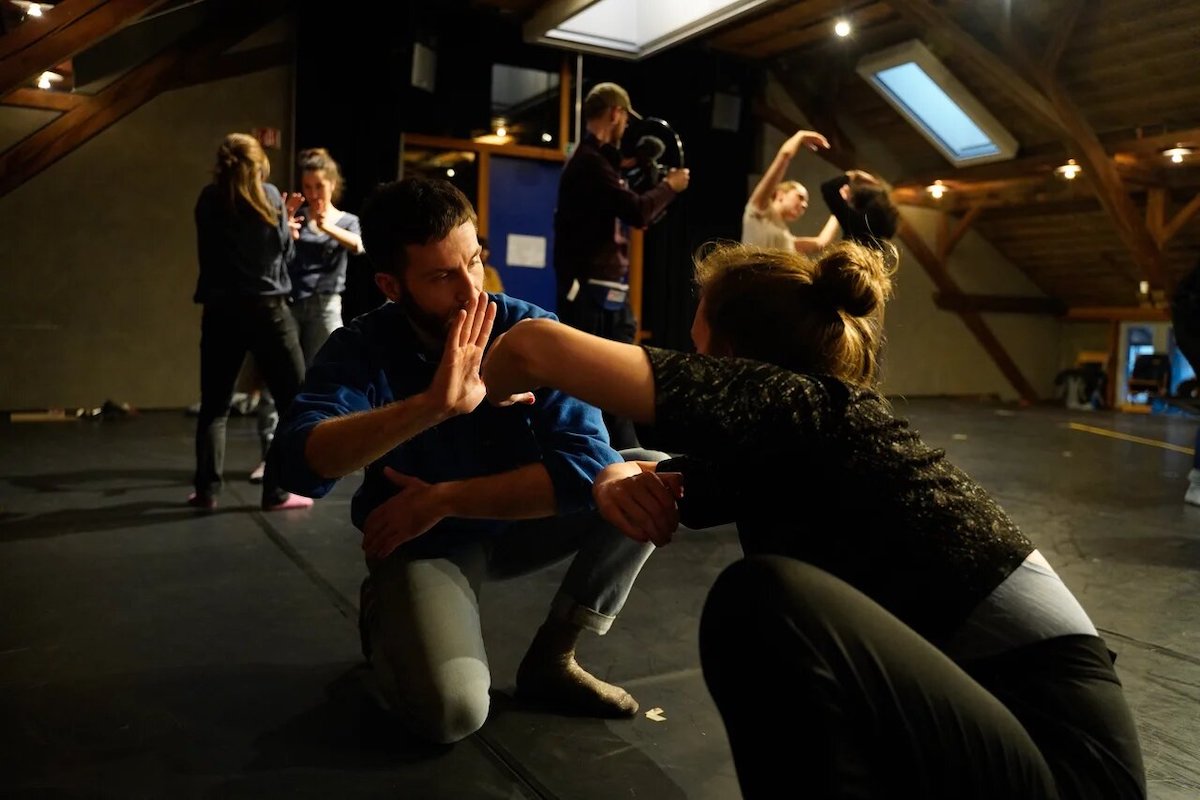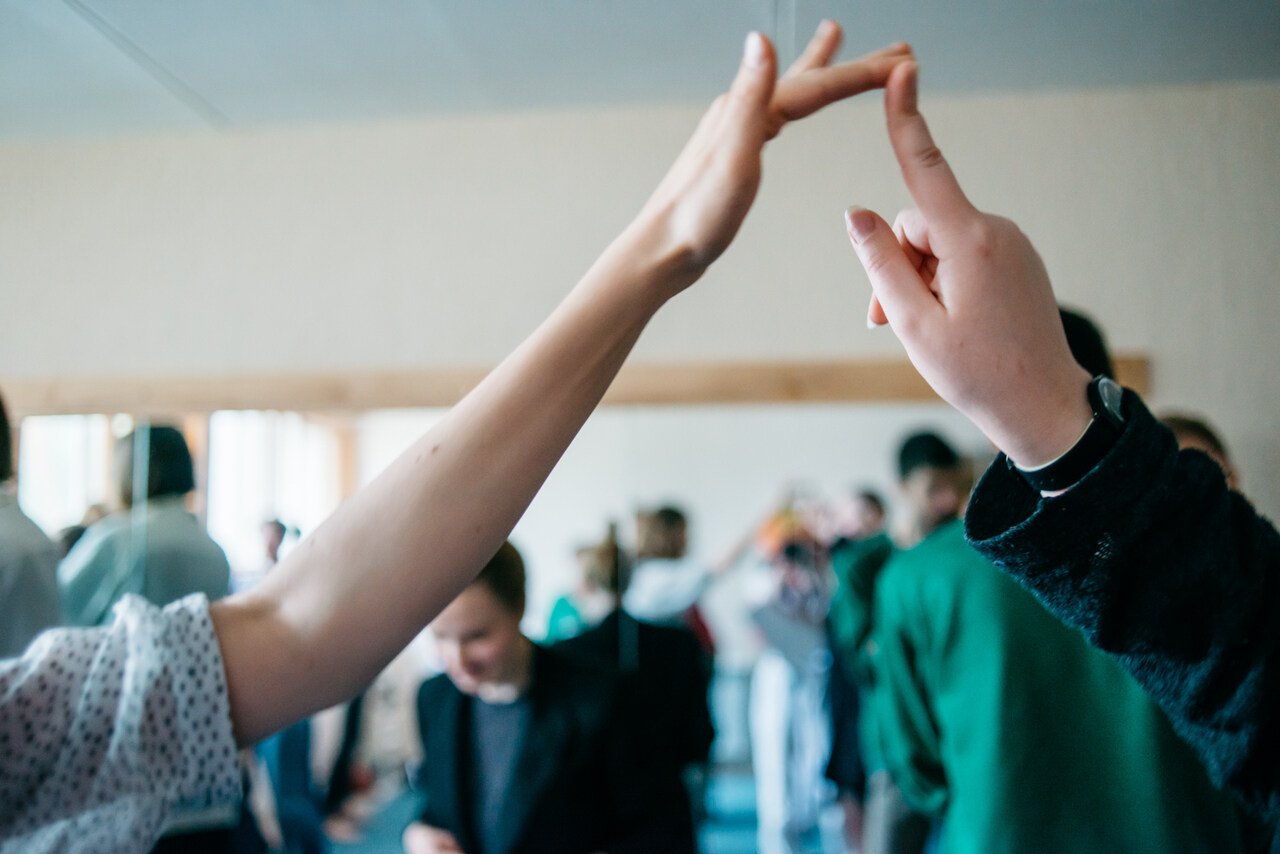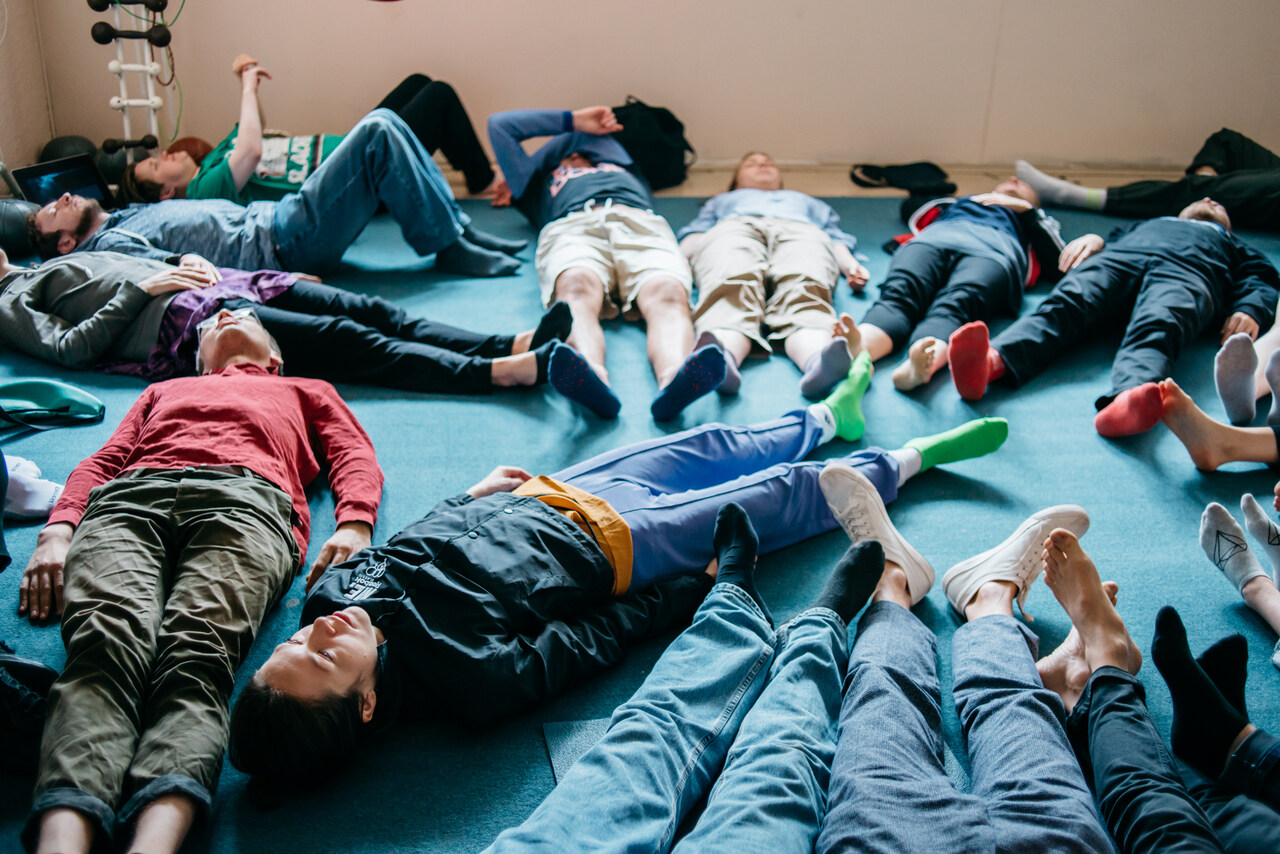In a world that teems with technology, the fine line between the digital and the offline blurs day by day. We become content creators, deeply embedded in our digital environments, while our everyday lives become interwoven with correspondence, notifications, and abstraction from the virtual world. Moscow-based artist Sasha Puchkova explores the status of the body in these physical and digital environments. Over a series of “performative experiments”, she has been studying the influence of the virtual on human behaviour, intrigued by the question: “How does our body function when our channels of communication have changed so drastically?”
Syntax, HSE Art Gallery. Image: Marina Merkulova
“Digital environments have become a battlefield of empathy, attack and debate. Our body is a powerful somatic system, which reacts to and changes with the triggers in our digital environment,” explains the artist. Since 2018, she has been staging workshops to explore how the human body has adapted to the online world. In these sessions, participants are invited to investigate how we manage and convey our emotions in today’s world.
In one performance series, Syntax of Power (2018) the artist, together with Christina Vegera, made an augmented reality program, where participants could track the division between online and offline worlds and analyse their feelings.
Syntax, HSE Art Gallery. Image: Marina Merkulova
Another recent experiment, Speculative Practices of Body Mutations (2019) at the Otherwise Festival in Zurich, co-authored by Daria Iuriichuk and Katerina Pislary, celebrated the emancipatory power of the body in the offline world, the sensations and emotions to which the digital sphere lacks access. For this group session, which explored the effects of gadgets on social interacts, Puchkova encouraged participants to move their bodies. “We apply improvised movement — working with our physical and imaginary bodies — to focus on [our own] intuition and bodily sensations.”

Speculative Practices of Body Mutations at Otherwise Festival (Zurich, Institute H0). Image Credit: H0 Institut and Michael Meili

Speculative Practices of Body Mutations at Otherwise Festival (Zurich, Institute H0). Image Credit: H0 Institut and Michael Meili
Puchkova’s movement experiments involve both face-to-face and digital communication. As well as a physical, “real-world” exercises, participants are asked to transmit a reflection of themselves and the people around them into the digital world, through social media, live broadcasting or via a camera. Here the camera becomes a transmitter, a tool to move bodies into cyberspace; opening a door to exist on the border between online and offline realms at the same time.
Let’s Play Collage by Sasha Puchkova
Similarly, in Detachment on/off line tactics with/out participation (2019) participants were given the chance to experiment with VRChat — an online virtual reality social platform that allows players to interact with others as 3D character models — to show the juxtaposition between “real” and virtual matter. Puchkova developed exercises that would allow participants to gain new insights as to how the human body behaved in VChat space. She asked participants to imagine their bodies moving through walls or each other, a common VR glitch. The workshop ends with participants discussing the connection between these parallel online and offline worlds, and how they relate to each person’s everyday experience. “Our online and offline states are not extremes — they flow logically into one another,” says Puchkova. “We act and live in both states at the same time”.

Detachment on/off-line tactics with/out of participating, Laboratory, WHPH. Image Credit: http://www.workhardplay.pw/

Detachment on/off-line tactics with/out of participating, Laboratory, WHPH. Image: http://www.workhardplay.pw/
Much of the artist’s work hinges on questions and discussions. In 2019, she organised a performative seminar, Linking to the Skin, at Moscow’s Garage Museum, bringing individuals from different disciplines together to discuss the notion of skin. “I suggested looking at skin from the perspective of games or social networks to discuss the new “I” — [the person] which only consists of the surface,” says Sasha. “The skin is our largest organ; it is a massive receptive field of sensitivity. But what if we only had skin and nothing more, like the skin of a character in a video game? Is our skin [like a video game] controller, or [is it what is being] controlled?” Puchkova avoids answering these questions herself, but invites viewers to find solutions for themselves. “Within the frame of the capitalist market, the skin has control over the person; it is almost an abyss of our material desires,” she muses. “But at the same time, it is controlled: online, however, we spend money and time to upgrade our “skins”. It is also a kind of virtual object, a tool.”